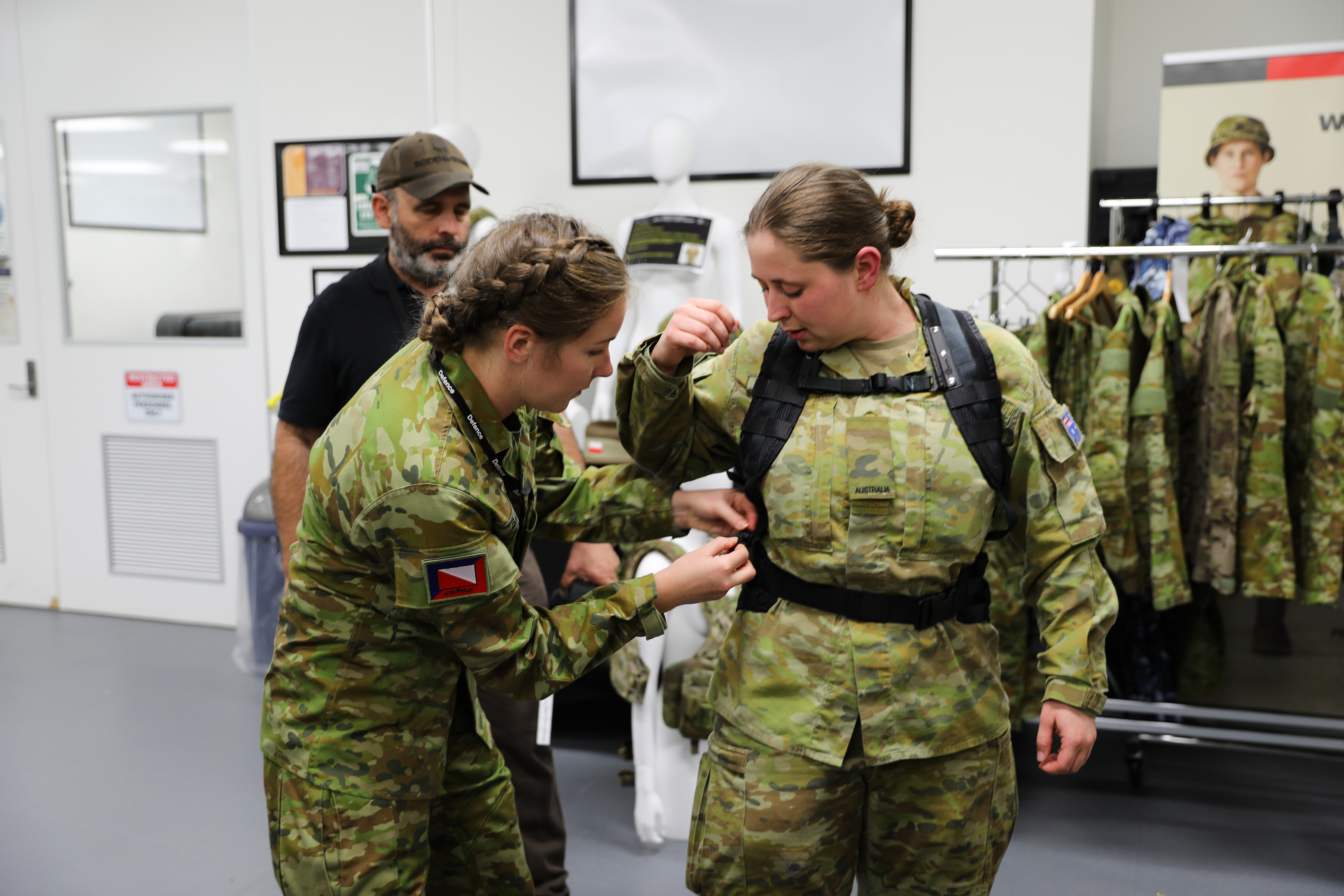
5 minute read
Dressed for Duty: Clothing Innovation And The Australian Defence Force
By Kate Spinks-Colas and Defence Capability Acquisition And Sustainment Group Land Domain Team
Behind the camouflage and combat boots, a lot of work goes into developing uniforms and accessories that fit the form, function and rapidly changing technologies of the Australian Defence Force.
Sometimes even the smallest changes to the design of military clothing and accessories can have a major impact on the everyday lives of defence personnel and the way they carry out their roles.
In 1968, the Australian Army rolled out its newly designed jungle green uniform to personnel serving in Vietnam. To an uninformed eye, the new uniform may have looked identical to its predecessor. However, several subtle changes reveal the importance of innovation in military clothing and the level of research and testing involved.
For example, the new combat boot included a spike-resistant sole to protect soldiers against punji sticks, which were a form of guerilla warfare where sharpened sticks were placed in well-camouflaged pits or trenches.
The new trousers were made from a lighter-weight material with less bulk and a slimmer fit to better suit the tropical conditions, and the shirt included two shoulder pockets to store the field dressing, which was previously stored in the trouser pocket.
The new shirt also had angled pockets on the front of the shirt, which was designed in line with research that revealed soldiers tended to reach into their pockets on an angle.
High-quality, well-fitted and functional clothing is a universal need among Defence personnel. Today, the Australian Defence Force (ADF) continues to research, develop and test new clothing and equipment, responding to the changing needs of the workforce, environmental conditions of new combat zones or technological advances.

The ADF has two areas responsible for defence clothing: the Clothing System Program Office (CLOSPO) and Diggerworks. Each sit within the Land Systems Division of the Capability Acquisition and Sustainment Group. CLOSPO is responsible for creating the uniforms and clothing Defence personnel wear, including combat and ceremonial uniforms, specialist garments such as flame retardant or personal protective items, footwear, headwear, gloves, badges and banners.
On the other hand, Diggerworks is a unique multi-disciplinary team made up of operationally experienced Defence personnel, engineers, scientists and project managers. They work with Defence, especially the CLOSPO, to identify, develop and integrate new uniform items that enhance Defence capabilities.
CLOSPO has a close relationship with the Australian fashion industry and regularly works with them on industry innovation and to understand what commercial solutions may be available. To support the CLOSPO in this process, Diggerworks collects feedback and recommendations, and with CLOSPO and the fashion industry, produce a range of prototypes for testing and evaluation across the services. Both groups continually monitor the clothing supplied to the sailors, soldiers and aviators to make sure it is safe and of high quality.
Major changes to standard combat uniforms are usually undertaken every 8 to 10 years. The most recent example of this is a change to the Royal Australian Navy uniform. In 2022, the Disruptive Camouflage Naval Uniform was replaced by the Maritime Multicam Pattern Uniform. The new uniform was a significant improvement in terms of the materials used and its fit and functionality. The design also made it consistent with the equivalent uniform typically worn by the Army.

Minor product development is conducted more often and includes improvements to existing garments. This can be seen in the new Australian Multicam Pattern Uniform (AMCU) Alternate Fit, which offers all members of Defence an increase in choice when selecting uniforms. The new uniform additions have been designed to fit different body shapes and therefore improve functionality. Initial prototypes were developed and evaluated as part of the Women In Combat Program led by Diggerworks. Feedback was incorporated into design modifications before being introduced across Defence. This program also led to the development of a combat boot that was specifically sized and shaped to suit women’s feet, as previous combat boots were more generic in their design.
Another important driver of innovation is technological advancement. In 2012, a brevet badge for Unmanned Aerial Vehicle pilots was designed and introduced. Unmanned Aerial Vehicles have been in use since 2005 and flown in operations in locations including Iraq, Afghanistan and East Timor. The brevet badge is worn on the uniform to recognise the unique qualification of personnel trained to operate this now essential technology. The design of the brevet badge has a long history dating back to the First World War and is part of military uniform tradition.
A more recent example of how CLOSPO’s work is influenced by technological advancements is in the development of fingerless gloves for aircrew. Fingerless flying gloves are currently being developed and tested to allow aircrew to operate the touch screens now used in modern aircraft.The work that Defence undertakes to clothe and equip its people is extremely important, in some cases lives depend on it. Whilst their shirts and boots may look like regular shirts and boots to many, they hide hours of research, design and testing.
The work that defence undertakes to clothe and equip its people is extremely important, and, in some cases, lives depend on it. Whilst their shirts and boots may look like regular shirts and boots to many, they invariably hide hours of research, design and testing.
Kate Spinks-Colas is a curator at the Shrine of Remembrance.










